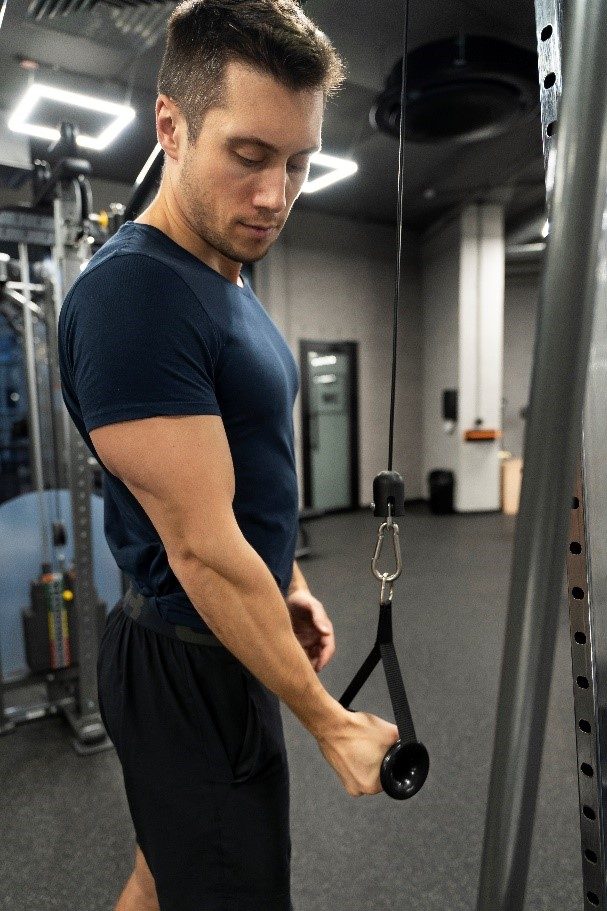Master Cable Back Exercises for a Stronger, Sculpted Figure
Introduction:
Cable back exercises are a wonderful way to focus and enhance the muscles in your back, increasing both strength and attractiveness. Whether you’re a beginner or an experienced gymgoer, incorporating cable-back workouts into your routine can provide a lot of benefits. In this detailed guide, we’ll look at the key features, specifications, and commonly asked questions about cable-back exercises, so you can make the most of your workouts and achieve your fitness goals.
Cable back exercises are varied.
Cable machines provide a range of back exercises, including latissimus dorsi, rhomboids, and traps. From lat pulldowns to seated rows, there are exercises to suit every fitness level and goal.
Constant Tension
Cable machines, unlike free weights, maintain constant tension throughout the whole range of action, which increases muscle engagement and promotes muscle growth. Continuous stress is really beneficial for hypertrophy training. Continuous stress is really beneficial for hypertrophy training.
Adjustable resistance:
Most cable machines include adjustable weight stacks or resistance bands, which allow you to easily vary the intensity of your workouts. This versatility makes cable back workouts suitable for persons of all fitness levels from beginners to expert lifters.
Cable Back Exercise Specification:
Type of machine:
Cable back workouts may be done on a number of cable equipment, including crossovers, lat pulldowns, and seated cable rows.
Weight capacity:
Cable machines sometimes employ weight stacks or resistance bands with variable weight increments, to support a wide variety of strength levels.
Attachments:
Many cable machines come with a variety of attachments, including straight bars, angled bars, and stirrup handles, allowing for a wide range of workouts and grip variations.
Range of motion:
Cable back workouts are most effective when performed with appropriate technique and a wide range of motion. To obtain complete contraction and extension of the targeted muscles change the machine settings and use the appropriate attachments.
Safety features:
When using cable machines, always prioritize safety by starting with fewer weights, maintaining proper technique, and avoiding jerky movements that might injure you.
Here are five highly effective cable back exercises to incorporate into your workout routine:
1. Lat Pulldown (Wide-Grip):

• Attach a wide-grip handle to the cable machine.
• Sit down and adjust the knee pad so that your thighs are firmly in place.
• Grasp the handle with an overhand grip, slightly wider than shoulder-width apart.
• Pull the bar down towards your chest, keeping your elbows pointed down and your back straight.
• Pause briefly at the bottom of the movement, then slowly return to the starting position.
• Focus on engaging your lat muscles throughout the movement for maximum effectiveness.
2. Seated Cable Row:
• Sit on the cable row machine with your feet flat on the footrests and knees slightly bent.
• Grab the handles with an overhand grip, palms facing down.
• Keep your back straight and pull the handles towards your midsection, squeezing your shoulder blades together.
• Pause briefly at the peak of the movement, then slowly extend your arms to return to the starting position.
• Maintain control throughout the exercise and avoid using momentum to swing the weight.
3. Single-Arm Cable Row:

• Attach a single-grip handle to the cable machine.
• Stand facing the machine with your feet shoulder-width apart and knees slightly bent.
• Grab the handle with one hand, palm facing inward.
• Keep your back straight and pull the handle towards your hip, focusing on squeezing your back muscles.
• Pause briefly at the peak of the movement, then slowly extend your arm to return to the starting position.
• Perform equal reps on both sides to ensure balanced muscle development.
4. Straight-Arm Pulldown:
• Attach a straight bar or rope handle to the cable machine.
• Stand facing the machine with your feet shoulder-width apart and knees slightly bent.
• Grasp the bar or handle with an overhand grip, palms facing down.
• Keep your arms straight and pull the bar down towards your thighs, engaging your lats and upper back.
• Pause briefly at the bottom of the movement, then slowly return to the starting position.
• Focus on keeping your core engaged and avoiding excessive leaning or swaying.
5. Face Pull:
• Attach a rope handle to the cable machine at shoulder height.
• Stand facing the machine with your feet shoulder-width apart and knees slightly bent.
• Grasp the rope with an overhand grip, palms facing each other.
• Pull the rope towards your face, keeping your elbows high and squeezing your shoulder blades together.
• Focus on pulling with your rear deltoids and upper back muscles.
• Pause briefly at the peak of the movement, then slowly return to the starting position.
Incorporate these five cable back exercises into your routine to target different areas of your back and achieve comprehensive muscle development and strength gains.
Conclusion:
Incorporating cable back exercises into your fitness routine can yield significant benefits, ranging from improved strength and muscle definition to enhanced posture and back health. By understanding the key features, specifications, and FAQs surrounding cable back exercises, you’ll be well-equipped to harness the full potential of this versatile workout tool. So, what are you waiting for? Elevate your back workouts with cable exercises and take your fitness journey to new heights!
FAQs about Cable Back Exercises:
Are cable back exercises suitable for beginners?
Absolutely! Cable back exercises can be easily adjusted to accommodate beginners by selecting lighter weights and focusing on mastering proper form before increasing intensity.
How often should I perform cable back exercises?
It’s recommended to incorporate cable back exercises into your workout routine 2-3 times per week, allowing for adequate rest and recovery between sessions.
Can cable back exercises help alleviate back pain?
Yes, strengthening the muscles in your back through cable exercises can help alleviate back pain by improving posture, stability, and overall spinal health
Can I perform cable back exercises at home?
While cable machines are typically found in gym settings, you can replicate some cable back exercises at home using resistance bands or alternative equipment like suspension trainers.
How do I know if I’m using proper form during cable back exercises?
Focus on maintaining a neutral spine, engaging your core, and avoiding excessive swinging or jerking motions. If unsure, consider working with a certified personal trainer to ensure proper technique.














2 Comments